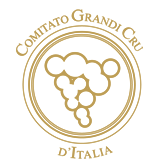
Antinori
This post is also available in:
 Italiano (Italian)
Italiano (Italian)
The Antinori family have been associated with the city of Florence since the early XIII century, when they moved from Calenzano to carry out commercial transport activities in the city. The Antinoris were recorded for the first time in the official winemaker register “Arte dei Vinattieri” in 1385. For twenty-six generations they have been true protagonists of Tuscan viticulture, and since the end of the XIXcentury, several of their estates and farms have evolved into a highly-organized agricultural enterprise in close contact with the territory. That very same landscape is now shaped by thousands of acres of vineyards belonging to the Antinoris.
Miles and miles of vine rows develop from the heart of Tuscany and the noble lands of Chianti, to the Val d’Orcia, a Unesco World Heritage Site, and the gentle hills overlooking the sea in the northern part of Maremma.
First of all, there’s Chianti, a land of wine cultivation since the beginning of time, where the noble Antinoris own four estates: the Peppoli vineyards with a peculiar East/NorthEast exposure, benefiting from a unique microclimate that retains the warmth of the sun for a long time, and the land surrounding Badia a Passignano – an ancient abbey owned by the Vallombrosan monks; the Antinoris used to store their precious wine in their cellars with mighty walls and splendidly vaulted ceilings. Right there, a thousand-year-old Vitis vinifera specimen was found in 1983.
Then, there are the two real family jewels: the plots of Tignanello and Solaia, used to produce two truly iconic wines on land of Pliocene epoch origin, quite dry and rich in marlstone and schist.
In the harsher landscape of the Val d’Orcia, in Pian delle Vigne (whose name comes from a quaint XIX century railway station inside the estate and still in use), next to 160 acres of vineyards, there’s a large area which measures twice the whole Mediterranean forest, while in the Guado al Tasso estate, in the centre of the so-called “Bolgheri amphitheatre” which slopes down to the sea, the climate allows “rooted cuttings” to use young plants of the different varieties in the vineyards of the Antinoris.
Many types of vine are, therefore, grown: from the indigenous Sangiovese variety to the less traditional Cabernet Sauvignon and Cabernet Franc del Tignanello, to Merlot Syrah or small quantities of Malvasia, up to Vermentino and Petit Verdot, in warmer Maremma.
There are also many olive groves, typical of the Italian landscape, cultivated and pruned differently from region to region, which are here represented by the traditional varieties of “Frantoio”, “Leccino”, and “Moraiolo”.
The Antinori’s vineyards also shape the very landscape of other regions, such as that of the Umbrian Apennines, where the beautiful medieval Castello della Sala, just 11 miles from Orvieto, dominates the landscape from plateau surrounded by ancient Etruscan hill towns.
Right there, as it happened in the past, traditional grapes are still grown in the vineyards – the indigenous varieties of Procanico and Grechetto.
Nestled among vineyards and olive groves, there are not only ancient farmhouses, patrician villas and farms but also elegant contemporary architecture, attentive to building materials and eco-sustainability, such as the brand new cellar in San Casciano Val di Pesa, opened in October 2012 and built with local materials and utmost respect for the environment and the Tuscan landscape of Chianti. Built with a low environmental impact, the cellar is almost “invisible”: in total harmony with the landscape, it blends with it, so much so that it appears as a large hill marked by two cracks carved into the vineyards, while the crops cover the whole building.
Brown-reddish like the shades of the earth, the cellar was also designed to welcome visitors and show the production of wine in all its phases, the history of the Antinori family, as well as the artistic and gastronomic heritage of the area.
It is actually possible to visit the Museum where the Antinori family talk about their past in a most unusual way. In a space frozen in time, where avant-garde interacts with old traditions in a magnificent exhibition of contemporary and ancient works of art, three internationally acclaimed artists, Yona Friedman, Rosa Barba, and Jean- Baptiste Decavèle, introduce visitors to the local landscape heritage, pinpointed with their on in-situ creations.
This post is also available in:
 Italiano (Italian)
Italiano (Italian)
Contatti
Piazza Antinori, 3
55 23595
antinori@antinori.it
Altre info
su prenotazione

